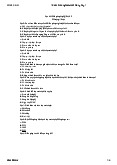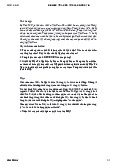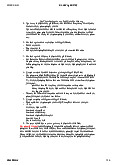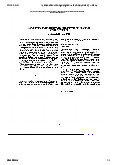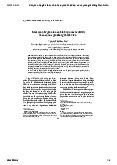
















Preview text:
19:10 1/8/24
ELT1 Final TEST - document for English Department
FINAL TEST ENGLISH LANGUAGE TEACHING
PART 1: Features and methods matching. G RAMMAR – TRANSLA TION METHOD (GTM):
The classical method (used to teache classical language: Greek & Lantin) - Purpose:
+ Help students to read and appreciate foreign literature.
+ Improve their writing and speaking in their language.
+ Improve their brain capacity. - The goals:
Learning a language is to be able to read literature written in the target language. DIRECT METHOD (DM) - The goal:
to use the target language to cummunication. - The feature:
use of demonstration and visual aids - The goals of T s:
+ Ss can use the target language to cummunication.
+ Ss should learn how to think in the target language. - The goals:
+ Ss can use the target language to communicate
+ Ss need to overlearn the language
Use it automatically without thinking + Habit imformation COMMUNICA
TTIVE LANGUAGE TEACHING (CL T) -
Understanding & using: + Vocabulary
+ Language convention (e.g; grammar punctuation ; spelling)
+ Syntax (e.g ; sentence structure) -
Using techniques to : + Overcome language gaps
+ Plan and assess the effectiveness of communication
+ Achieve conversational and written fluency
+ Modify text for audience & purpose CONTENT –
BASED INSTRUCTION (CBI)
a. Communication approach -
Strong version (using English to learn it)
+ Content – based instruction
+ Task – based language teaching + Participatory approach -
Weak version (learning to use English)
+ CLT (Communicative language teaching) - Definition:
any dual – focused educational context in which an addition
language; thus not usually the first language of the learner involved; is used an
medium in the teaching and learning of non - language content. about:blank 1/17 19:10 1/8/24
ELT1 Final TEST - document for English Department - The goals:
Ss: master both language & content simultaneously. T
ASK – BASE LANGUAGE TEACHING (TBL T) a. T
ypes of syllabi - Synthetic syllabi
+ Linguistic unit are ordered logically in a sequence
+ Ss synthesize linguistic units for communication. - Analytic syllabi
+ Organised in terms of the purpose for which people are learning language
+ E.g: CBI Task – based language teaching (TLBT) - Featur e of method: + Meaningful
+ Having clear outcomes (understanding whether learner successful or not)
+ A problem – sloving negoiation between knowledge that the learner hold and new knowledge
+ Strong version of the communicate approach. - Goal:
Engaging Ss in tasks with clear outcomes
Facilitate their language learning. P
ART 2: Methods compareation (GTM; CL T; CBT; TLBT): - Goals of teachers -
Teaching/ learning characteristics - Students’ feelings -
Areas of language and language skills emphasized?
Similarities: Apply for high – intermediate levels learners. Diferenrces: GTM CTL CBI TLBT Goals of Students need Content is topic Ss: master both To facilitate students’ teacher to learn about of interest to
language & content language learning by the grammar students, such as simultaneously. engaging them in a rules and events or their variety of task that have vocabulary of interests, or can a clear outcome. the target be academic language and subject that develop their provides natural minds when content for the studying study of language another . Encourage the language development both simultaneously Teaching/ Students learn Teachers make
Authentic materials Students are encouraged learning grammar by meaning clear Visuals; realia; to use language
characterisstics inferring from through the use repeating; giving creatively and about:blank 2/17 19:10 1/8/24
ELT1 Final TEST - document for English Department the of visuals, realia, example; building spontaneously through requirements repeating, and by on Ss’ previous tasks and problem. and giving a lot experience Students focus on a memorizing examples, Activities relationship that is them, then building on addressing both comparable to real world using the students’ language and actives. The conveyance requirements previous conten of some sort of the for other experiences.
Highlighting meaning is central to this examples. Teachers teach how method. Assessment is Learn students to language is prmarily based on tasks grammar understand used in outcome. patterns such through the use particular
as conjugaton. of real pictures, subject repeating by Thinking giving many skills examples. Graphic Designing their organizers own language and content matching activities that highlight – specific subject languages. Students’ There are no It is thought that Students' Students are feelings this method will feelings toward motivated by doing keep students Content-Based tasks that prepare interested and Instruction them for the real motivated. Will (CBI) can vary world. help them based on understand the several factors, importance of including their what they are individual learning, and that learning language is a preferences, means to an end prior experiences with CBI, and the effectiveness of the instructional approach Areas of Vocabulary Only vocabulary Content-Based The meaning dimension language and and grammar iterms and Instruction of language is language skill are grammar (CBI) emphasized. Depending about:blank 3/17 19:10 1/8/24
ELT1 Final TEST - document for English Department emphasize emphasized. structures, but emphasizes on the nature of the task, Reading and also how these
the integration any of the 4 skills can be writing are the contribute the of language utlized. primary skills discourse learning with that the organizatons of the study of students work texts. All 4 skills academic on. There is are intergrated in content, which much less authentc allows students attenton given contexts. to develop to speaking both language and listening. proficiency and Pronunciation content receives littes, knowledge if any simultaneosusl attention. y PART 3: Discussion question (3p ts.) ALM, CLT, CBI, TBL T
1. Among the drills often used in ALM, which one do you
think the most useful to help students in their
language learning? Explain your choice.?
In my opinion, the repetton drill is the most useful to help
students in their language learning. Because human said that:
if you just studying without much practice, you can’t remember that knoeledge.
2. What are the benefits of using authentic materials
in language learning teaching & learning? Suggest
the types of autentic materials that can be used
with students at lower-level of proficiency and
high-intermediate level of proficiency.
Benefits of Using Authentic Materials in Language Teaching & Learning:
1.Real-World Relevance: Authentic materials reflect language
as it is used in real-life situations, making the learning
experience more relevant and practical for learners.
2.Cultural Insights: Authentic materials provide learners with
insights into the culture, customs, and nuances of the
language, helping them understand context-specific expressions and language use.
3.Motivation: Authentic materials can enhance learner
motivation as they engage with materials that are interesting,
current, and directly applicable to their interests and needs. about:blank 4/17 19:10 1/8/24
ELT1 Final TEST - document for English Department
4.Language Variety: Authentic materials expose learners to
various registers, accents, and forms of communication,
contributing to a well-rounded language proficiency.
5.Authentic Context: Learners develop a better understanding
of how language functions in authentic contexts, allowing them
to use language more effectively in real-life situations.
Types of Authentic Materials for Different Proficiency Levels:
1.Lower-Level Proficiency:
Picture Books: Illustrated books with simple language
can help beginners grasp vocabulary and sentence structures in context.
Children's Songs and Rhymes: Simple songs and
rhymes designed for children can be engaging and
provide basic vocabulary and expressions.
Everyday Signs: Real-life signs and symbols (e.g.,
traffic signs, restroom signs) are visual aids that convey
meaning and support language learning.
Simple Dialogues from Authentic Sources: Extract
short dialogues from authentic materials, such as
beginner-level newspapers or websites, to introduce real- life conversations.
2.High-Intermediate Level Proficiency:
News Articles: Articles from reputable news sources can
offer challenging vocabulary and expose learners to formal language use.
Movie Clips with Subtitles: Select short movie clips
with subtitles to expose learners to natural speech
patterns, intonation, and colloquial expressions.
Authentic Interviews: Transcripts of authentic
interviews or podcasts can provide learners with
exposure to diverse accents, vocabulary, and conversational styles.
Advertisements and Brochures: Analyzing authentic
advertisements and brochures helps learners understand
persuasive language and marketing strategies.
Online Forums or Blogs: Authentic content from online
forums or blogs allows learners to engage with informal
language, opinions, and discussions on various topics.
In both cases, it's crucial to provide appropriate support and
scaffolding to help learners navigate and comprehend authentic
materials. Teachers can design activities and tasks that guide about:blank 5/17 19:10 1/8/24
ELT1 Final TEST - document for English Department
learners in extracting meaning, analyzing language use, and
applying new knowledge to their own communication.
3. Explain the three features of a communicative
activity. Give one example of a communicative activity
and analyse its three features. In my idea, the repetton 4. drill is the most useful to help students in their language learning. Because, humans have 5. For example, if you just study without much practce, you can't remember that 6. knowledge about:blank 6/17 19:10 1/8/24
ELT1 Final TEST - document for English Department
4. What is content-based instruction? Distinguish
among the sheltered model, the adjunct model, and the theme-based model.
Content-Based Instruction (CBI):
Content-Based Instruction (CBI) is an approach to language teaching
that integrates language learning with the study of a specific
content area or subject matter. The primary goal is to develop both
language proficiency and content knowledge simultaneously. CBI
aims to make language learning more meaningful by using language
as a tool for understanding and expressing ideas in the context of academic content.
Distinguishing Among Sheltered, Adjunct, and Theme-Based Models: 1.Sheltered Model: Characteristics:
This model is designed for English language
learners (ELLs) who are not yet proficient in the target language. about:blank 7/17 19:10 1/8/24
ELT1 Final TEST - document for English Department
The content instruction is modified or "sheltered" to
make it more accessible to language learners.
Language input is simplified, and teachers use
various strategies such as visual aids, hands-on
activities, and simplified language to make the content comprehensible. Example:
In a sheltered science class for English language
learners, the teacher might use simplified language,
visuals, and hands-on experiments to teach basic scientific concepts. 2.Adjunct Model: Characteristics:
In the adjunct model, language instruction is
provided alongside the regular content instruction.
Language teachers collaborate with content
teachers to reinforce language skills while students study academic content.
The language instruction is designed to support and
enhance the understanding of the content material. Example:
In a history class, a language teacher might
collaborate with the history teacher to provide
language-focused activities, vocabulary instruction,
and language support to help students better
comprehend and express ideas related to historical events. 3.Theme-Based Model: Characteristics:
This model integrates language and content
instruction through thematic units or topics.
Language skills are developed within the context of
specific themes, allowing students to explore
various aspects of a subject in depth.
The emphasis is on interdisciplinary learning, with
language being a tool for exploring and expressing
ideas related to the chosen theme. Example:
A theme-based approach in a geography class
might involve studying a specific region or country.
Language skills are developed as students research,
discuss, and present information about the
geography, culture, and history of that region. about:blank 8/17 19:10 1/8/24
ELT1 Final TEST - document for English Department
5.What are unfocused and focuesed tasks?
Distinguish between input-providing and output- prompting tasks.
PART 4: Activity planning (3pts.) TBLT 1. You
are teaching students at pre-intermediate English level
(A2). Design an information-gap task for your students. (TBLT) Describe:
– the materials you would use
– how you would prepare students for the task (pre-task phase)
– the steps you would do to conduct the task, how
students would take part in the task (task phase)
what you would do after the students finish the activity (post-task phase) about:blank 9/17 19:10 1/8/24
ELT1 Final TEST - document for English Department
Information-Gap Task: Planning a Party Materials:
1.Invitation Templates: Prepare two different invitation
templates for a party, each with missing information (date,
time, location, dress code, etc.).
2.Vocabulary Cards: Create vocabulary cards with relevant
words and phrases related to party planning (e.g., decorations, food, music).
3.Role Cards: Assign each student in a pair a specific role (e.g.,
Party Planner A and Party Planner B).
Pre-Task Phase (15 minutes): 1.Introduction:
Introduce the topic of party planning and discuss key
elements of a party (e.g., date, time, location, etc.).
Present the invitation templates and briefly explain that they are incomplete. 2.Vocabulary Building:
Review and teach essential vocabulary related to party
planning using the vocabulary cards.
Practice pronunciation and usage of the vocabulary
through activities such as matching exercises or role- play. 3.Role Assignment:
Assign roles to students within each pair – one student as
Party Planner A and the other as Party Planner B.
Explain that they will work together to complete their
respective invitation templates.
Task Phase (25 minutes): 1.Instruction:
Distribute the invitation templates, vocabulary cards, and role cards to each pair.
Instruct students not to show their invitation templates to their partners. 2.Task Execution:
Students take turns asking and answering questions to
gather the missing information for their invitation templates. about:blank 10/17 19:10 1/8/24
ELT1 Final TEST - document for English Department
Encourage the use of the recently learned vocabulary during the conversation. 3.Collaboration:
Emphasize that the success of the task depends on
effective communication and collaboration between the two Party Planners.
Monitor and provide support as needed, focusing on language accuracy and fluency.
Post-Task Phase (15 minutes): 1.Reflection:
Bring the class back together and discuss the completed invitation templates.
Encourage students to share any challenges they faced and how they overcame them. 2.Language Focus:
Address any common errors or language issues observed during the task.
Provide feedback on successful language use and
commend good communication strategies. 3.Extension Activity:
As an extension, students can create a short role-play
where they use the completed invitations to invite each other to the party.
This reinforces the learned vocabulary and provides additional speaking practice. 2.
You are teaching students at
intermediate English level (B1).
Design a reasoning-gap task for
your students. (TBLT) Describe:
– the materials you would use
– how you would prepare students for the task (pre-task phase)
– the steps you would do to conduct the task, how
students would take part in the task (task phase)
– what you would do after the students finish the activity (post-task phase)
Reasoning-Gap Task: Debating Social Issues about:blank 11/17 19:10 1/8/24
ELT1 Final TEST - document for English Department Materials:
1.Topic Cards: Prepare topic cards with controversial social
issues (e.g., environmental concerns, technology impact, education reforms).
2.Pro-Con Cards: Create pro and con argument cards related to each social issue.
3.Role Cards: Assign roles to students within each pair or group (e.g., Team A and Team B).
Pre-Task Phase (20 minutes): 1.Introduction:
Introduce the concept of debating and its purpose: to
present and defend arguments on a given topic.
Discuss the importance of respectful communication and
considering multiple perspectives.
2.Topic Familiarization:
Present the topic cards and briefly discuss each social issue with the class.
Encourage students to share their initial thoughts on the topics. 3.Argument Structure:
Teach or review the structure of a persuasive argument,
including introducing a claim, providing evidence, and
concluding with a summary statement.
Discuss common expressions used for expressing opinions and giving reasons. 4.Role Assignment:
Assign roles (Team A and Team B) and provide each pair
or group with a social issue to debate.
Explain that each team will receive pro and con argument
cards related to their assigned topic.
Task Phase (35 minutes): 1.Instruction:
Distribute the topic cards, pro and con argument cards,
and role cards to each pair or group.
Emphasize that they need to work collaboratively to form
strong arguments for both sides of the issue.
2.Collaborative Argument Building:
Students work together to organize and develop
arguments based on the pro and con cards. about:blank 12/17 19:10 1/8/24
ELT1 Final TEST - document for English Department
Encourage critical thinking and reasoning as they construct their arguments. 3.Debating Session:
Each pair or group takes turns presenting their
arguments in a structured debate format.
Encourage students to actively listen to the opposing
team's arguments and respond thoughtfully.
Post-Task Phase (20 minutes): 1.Reflection:
Bring the class back together for a reflective discussion.
Ask students to share their thoughts on the experience,
challenges faced, and insights gained during the debate. 2.Language Feedback:
Provide feedback on language use, focusing on effective
expression of opinions, use of reasoning, and appropriate vocabulary.
Discuss any language patterns or expressions that emerged during the debates. 3.Class Discussion:
Facilitate a class discussion about the social issues,
allowing students to express their personal views and perspectives.
Encourage open dialogue and respectful communication. 4.Extension Activity:
As an extension, assign a reflective essay where students
individually express their opinions on the debated topics and reflect on the experience. 3.
You are teaching students at pre-intermediate English level (A2).
Design a focus task in the form of an input-
providing task for your students. (TBLT) Describe:
– the materials you would use
– how you would prepare students for the task (pre-task phase)
– the steps you would do to conduct the task, how
students would take part in the task (task phase)
– what you would do after the students finish the activity (post-task phase)
Focus Task: Describing Daily Routines Materials: about:blank 13/17 19:10 1/8/24
ELT1 Final TEST - document for English Department
1.Picture Cards: Prepare a set of picture cards illustrating
various daily activities (e.g., waking up, brushing teeth, eating
breakfast, going to school, etc.).
2.Word Cards: Create word cards with vocabulary related to
daily routines corresponding to the picture cards.
3.Sentence Structure Examples: Prepare simple sentence
structure examples related to daily routines.
Pre-Task Phase (15 minutes): 1.Introduction:
Introduce the topic of daily routines and explain that
students will be learning to describe their daily activities in English.
Engage in a brief class discussion about common daily routines.
2.Vocabulary Introduction:
Present the word cards with key vocabulary related to daily routines.
Practice pronunciation and ask students to repeat the words after you. 3.Sentence Structure:
Show sentence structure examples for describing daily
routines, using simple sentences such as "I wake up at
7:00 AM" or "I brush my teeth before breakfast."
Discuss the use of time expressions (e.g., in the morning,
in the afternoon) in these sentences. 4.Interactive Practice:
Engage students in interactive activities to practice the
new vocabulary and sentence structures, such as
matching pictures with words or completing sentences
with the correct time expressions.
Task Phase (25 minutes): 1.Instruction:
Divide the class into pairs or small groups.
Distribute picture cards and word cards to each group. 2.Task Execution:
Students work collaboratively to match the picture cards
with the corresponding word cards.
Encourage them to use the sentence structure examples
provided to create simple sentences describing daily routines. 3.Peer Interaction: about:blank 14/17 19:10 1/8/24
ELT1 Final TEST - document for English Department
Each student in the pair or group takes turns describing
their daily routines to their partner(s).
Encourage open communication and provide support as needed.
Post-Task Phase (15 minutes): 1.Group Sharing:
Invite each group to share a few sentences describing
their daily routines with the class.
Encourage peer feedback and discussion. 2.Language Feedback:
Provide positive feedback on language use and pronunciation.
Address any common errors or areas for improvement. 3.Application Activity:
Assign a homework task where students write a short
paragraph about their own daily routines using the
vocabulary and sentence structures learned in class.
This reinforces the new language skills and allows for individual practice. 4.Review:
Conclude the lesson with a brief review of key vocabulary and sentence structures.
Emphasize the importance of incorporating the new
language into their daily communication. 4.
You are teaching students at pre-intermediate English level (A2).
Design a focus task in the form of an output-
prompting task for your students. (TBLT) Describe:
– the materials you would use
– how you would prepare students for the task (pre-task)
– the steps you would do to conduct the task, how
students would take part in the task (task phase)
– what you would do after the students finish the activity (post-task).
Focus Task: Creating a Daily Routine Presentation Materials:
1.Daily Routine Template: Prepare a template with sections
for different parts of the day (morning, afternoon, evening) and
spaces for students to fill in their daily activities. about:blank 15/17 19:10 1/8/24
ELT1 Final TEST - document for English Department
2.Sentence Starters: Provide sentence starters or prompts to
help students structure their sentences (e.g., "In the morning, I...", "After school, I...").
3.Visual Aids: Use pictures or symbols to represent common
daily activities, especially for students who may benefit from visual support.
Pre-Task Phase (15 minutes): 1.Introduction:
Introduce the topic of daily routines and explain that
students will be creating a presentation about their own daily activities.
Discuss the importance of organizing information and using language effectively. 2.Modeling:
Model how to fill in the template by sharing your own
daily routine using the sentence starters and visual aids.
Emphasize the use of vocabulary and sentence structures
introduced in previous lessons. 3.Vocabulary Review:
Review key vocabulary related to daily routines, ensuring
that students are familiar with the words they might use in their presentations.
Task Phase (30 minutes): 1.Instruction:
Distribute the daily routine templates, sentence starters,
and visual aids to each student.
Explain that they will be creating a short presentation about their daily routines. 2.Task Execution:
Students work individually to complete the daily routine
template, using the provided sentence starters and visual aids.
Encourage creativity and personalization in describing their routines. 3.Peer Interaction:
Pair students up and have them share their completed
presentations with their partners.
Partners can provide feedback and ask questions about each other's daily routines. 4.Presentation: about:blank 16/17 19:10 1/8/24
ELT1 Final TEST - document for English Department
Select a few students to present their daily routines to the whole class.
This could be done as a simple show-and-tell or with the
use of visual aids such as slides.
Post-Task Phase (15 minutes):
1.Feedback and Discussion:
Facilitate a class discussion about the presentations.
Encourage positive feedback and ask follow-up questions
to engage students in further discussion. 2.Language Focus:
Provide feedback on language use, emphasizing correct
sentence structures and vocabulary.
Address any common errors or areas for improvement. 3.Extension Activity:
As an extension, assign a written reflection where
students describe what they found easy or challenging in creating their presentations. 4.Review and Homework:
Conclude the lesson with a brief review of key vocabulary and language structures.
Assign a follow-up homework task, such as writing a short
paragraph about a classmate's daily routine based on the presented information. about:blank 17/17
